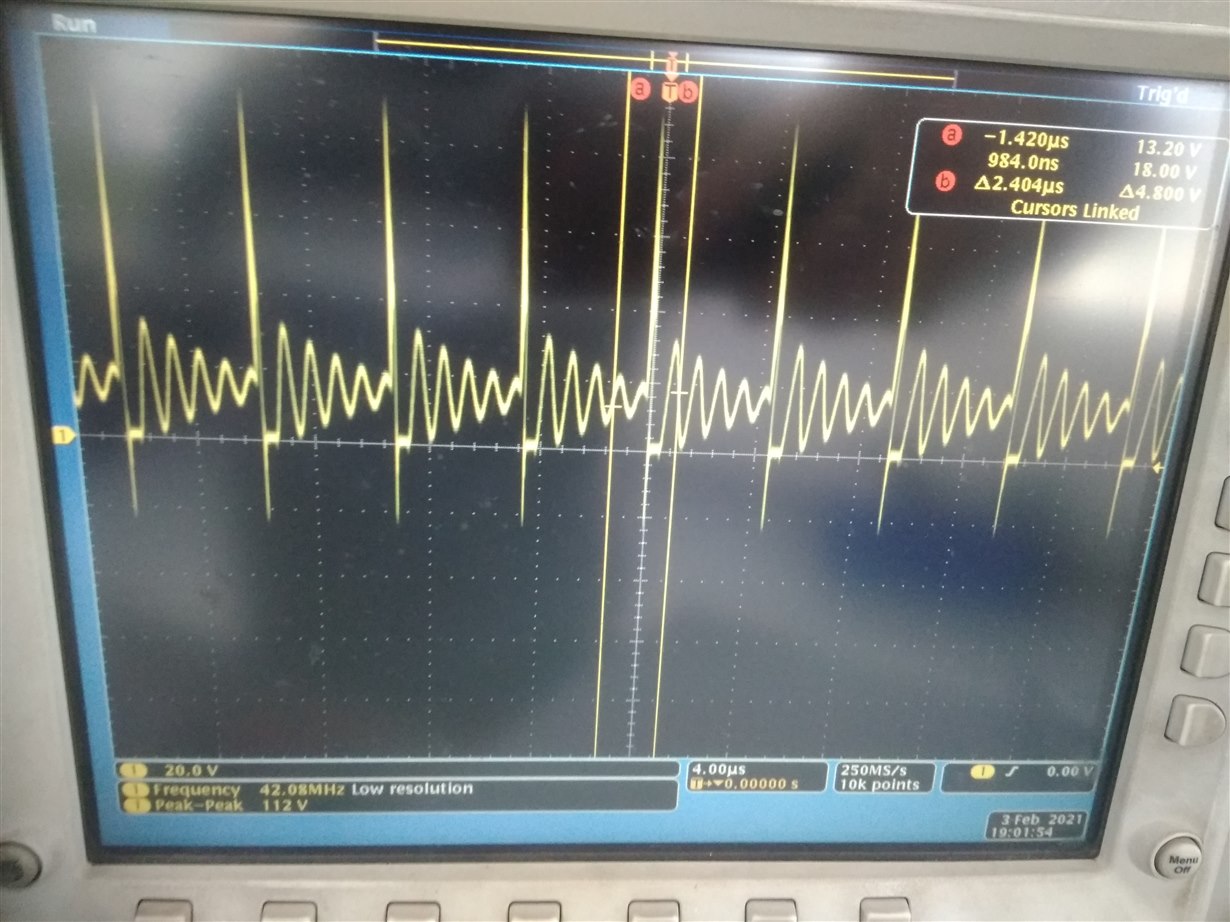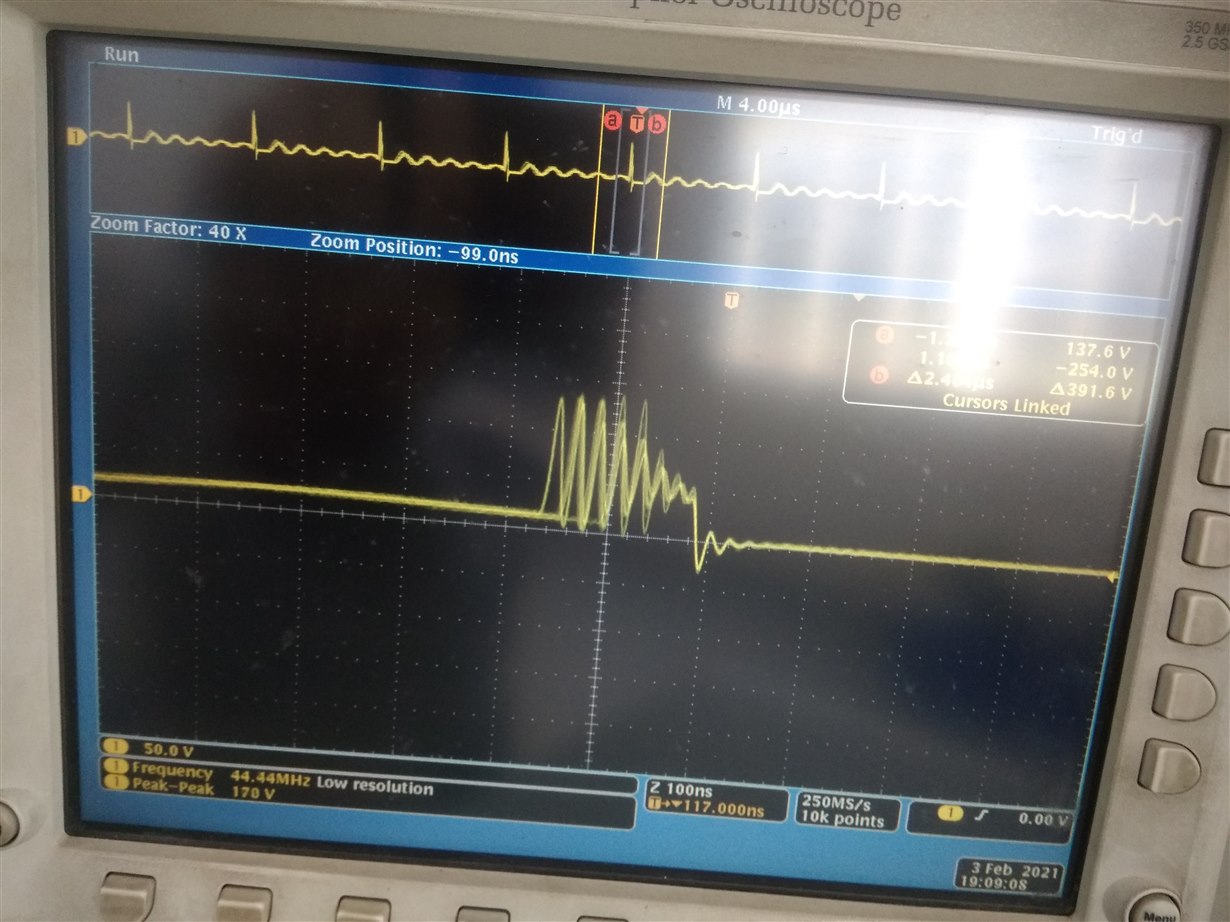Other Parts Discussed in Thread: CSD19537Q3, LM5145, CSD19531Q5A, CSD19502Q5B
Hi Ti,
I am using LM5146-Q1 for 225W converter i.e VIN 40-60V and Out 15V and 15Aamp.
I have used high and low side mosfet in parallel.
need suggesting what will be the gate resistance ?
Do i need to use separate resistor to each MOSFET or 1 resistor is enough for parallel MOSFET? what is the resistor value need to be consider?
By the thermal camera i could see the gate trace for lower MOSFET feel temperature rise do i need to increase the resistance or any pull down resister need to use.
Another issue i have, at no load the low side 1 MOSFET have temperature rise more than other , while i kept the some load both mosfet temperature came equal or start cool.
1 time the LM5146-q1 get hot and it went bed.
the upper mosfet is CSD19537Q3
and low: FDWS86068-F085



